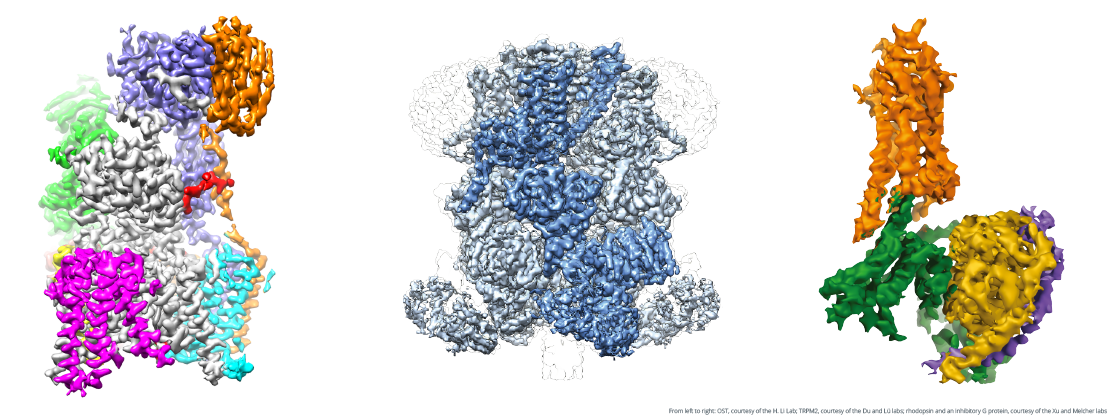Explainer: What is structural biology?
July 24, 2019

The human body is immensely complex, comprising trillions of cells, proteins and molecules that work in concert to keep all of our systems up and running. Each of these microscopic workers has a specific job; when these jobs aren’t carried out correctly, diseases can result.
One approach scientists use to understand how these systems work is structural biology, which focuses on determining the architecture of life’s smallest components. Using powerful microscopes and other advanced techniques, structural biologists examine molecular structure and seek answers to important questions about how the human body functions in health and disease.
How do structural biologists study such small things?
Structural biologists can be thought of like high-tech locksmiths. In order to cut a key, for example, a locksmith must know how the lock is built and how the pins inside of it are arranged. Structural biologists use a similar approach, mapping critical molecules in ways that can then be used to understand how they function.
One of the most powerful tools structural biologists use for this is cryo-electron microscopy, or cryo-EM. This technique relies on state-of-the-art microscopes that can visualize cells and molecules in their natural state down to the near-atomic or atomic level, or about 1/10,000th the width of a human hair.
Another technique long used by structural biologists is called X-ray crystallography. This method requires target molecules and proteins to be crystallized before being bombarded with X-ray beams, creating images that help scientists examine their structure in great detail. It can be used to visualize both small and large molecules; however, coaxing molecules into a crystallized form can be very challenging.
A third major technique in structural biology is nuclear magnetic resonance (NMR) spectroscopy, which is used to solve the structures of very small proteins. NMR measures the magnetic fields that surround the nuclei of atoms, giving scientists insight into the unique profiles of individual molecules.
How can structural biology help us improve human health?
There’s an old adage in structural biology — structure informs function. That is, a molecule’s shape has a big impact on what it does and how well it works. When a molecule, like a protein, becomes misshapen, it can’t carry out its job and this can cause breakdowns in normal systems. The end result can be disease. By revealing what these molecules look like, structural biologists can create blueprints that aid in the design of new medications that treat diseases and conditions like asthma, cancer, Parkinson’s and Alzheimer’s more effectively.
To learn more about Van Andel Institute’s work in structural biology, visit vari.vai.org/structural-biology.
Related reading:
Decoding our biological thermostat: Three questions for McKnight Scholar Dr. Juan Du
Research brief: Supercharging asthma treatment
High-resolution “blueprint” reveals mechanism that helps E. coli infect the urinary tract
Find more here.
DID YOU KNOW?
The David Van Andel Advanced Cryo-Electron Microscopy Suite at Van Andel Institute is one of only three locations with cryo-electron microscopes in the state of Michigan.
